One way to help kids with disabilities is to make physical therapy feel like play rather than work. And what could be more fun than driving a toy car?
In a one-day “hackathon” in October 2021, Mount Sinai’s Charles Lazarus Children’s Abilities Center members built custom-designed ride-on toy cars for eight children with movement disorders to facilitate physical therapy.
Starting with commercially sold Mattel toy cars, the team modified each one based on the individual child’s needs. The main goal was to facilitate the child’s movement.
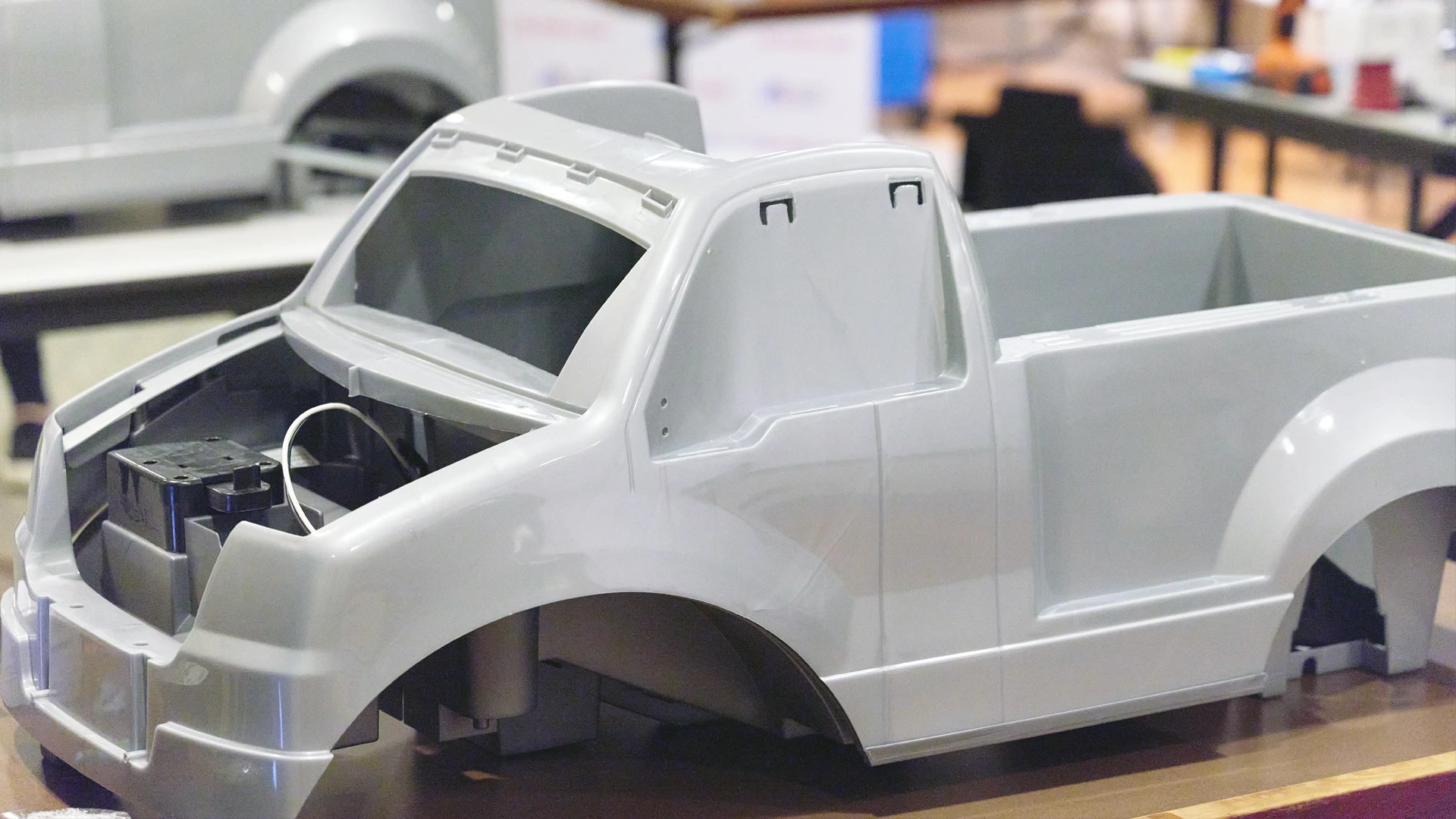
Using commercially-sold toy cars, Mount Sinai members customized them with accessibility features so that children with disabilities can drive and steer.
“Kids need to move because their brain development is based on it. They learn how to stand by falling, and how to engage with their environment by manipulating objects,” says Jimmy McKay, DPT, PT, Director of Science Communication at the Department of Rehabilitation and Human Performance. “When kids can’t move and decide where to go on their own, they don’t grow as fast as their age-matched peers.”
The hackathon traces its origins to Cole Galloway, PhD, Professor of Physical Therapy at the University of Delaware. He created a challenge called “Go Baby Go” to retrofit cars for kids with cerebral palsy or other movement disabilities and made all the instructions open-source. That sparked a movement in which regular Go Baby Go events are held around the world.
Seeing there was no permanent Go Baby Go presence in New York City, Dr. McKay brought the program to the Lazarus Center, which funded the entire project.
About 40 staff members were trained using the Go Baby Go manual for the local event. Divided into teams of three to five members per car, they arrived early and spent about four hours building the cars for eight children, who were current or recently discharged Mount Sinai patients.
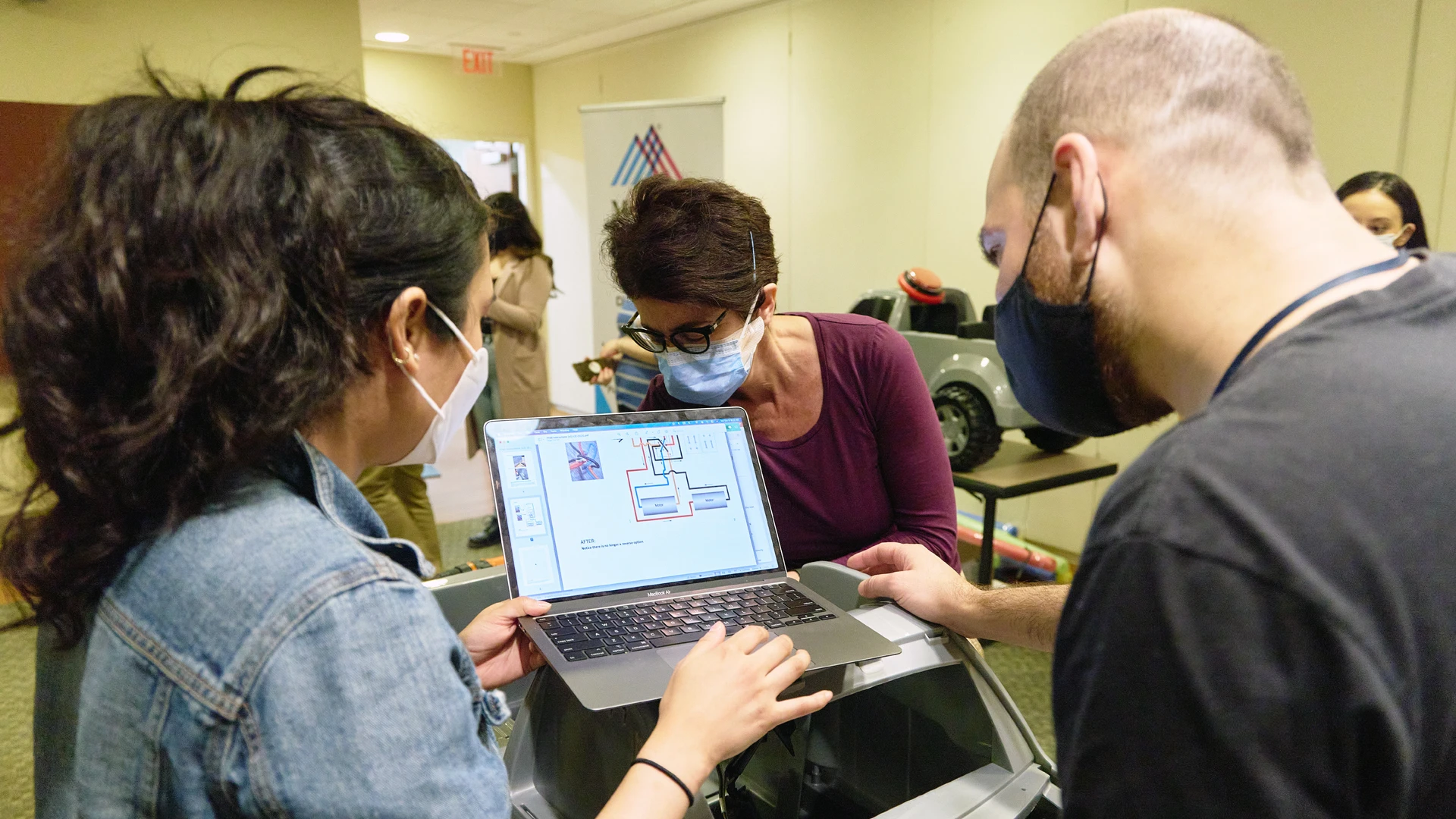
The hackathon event is part of a larger nationwide challenge, which has made the instructions for adapting the toy cars open source.
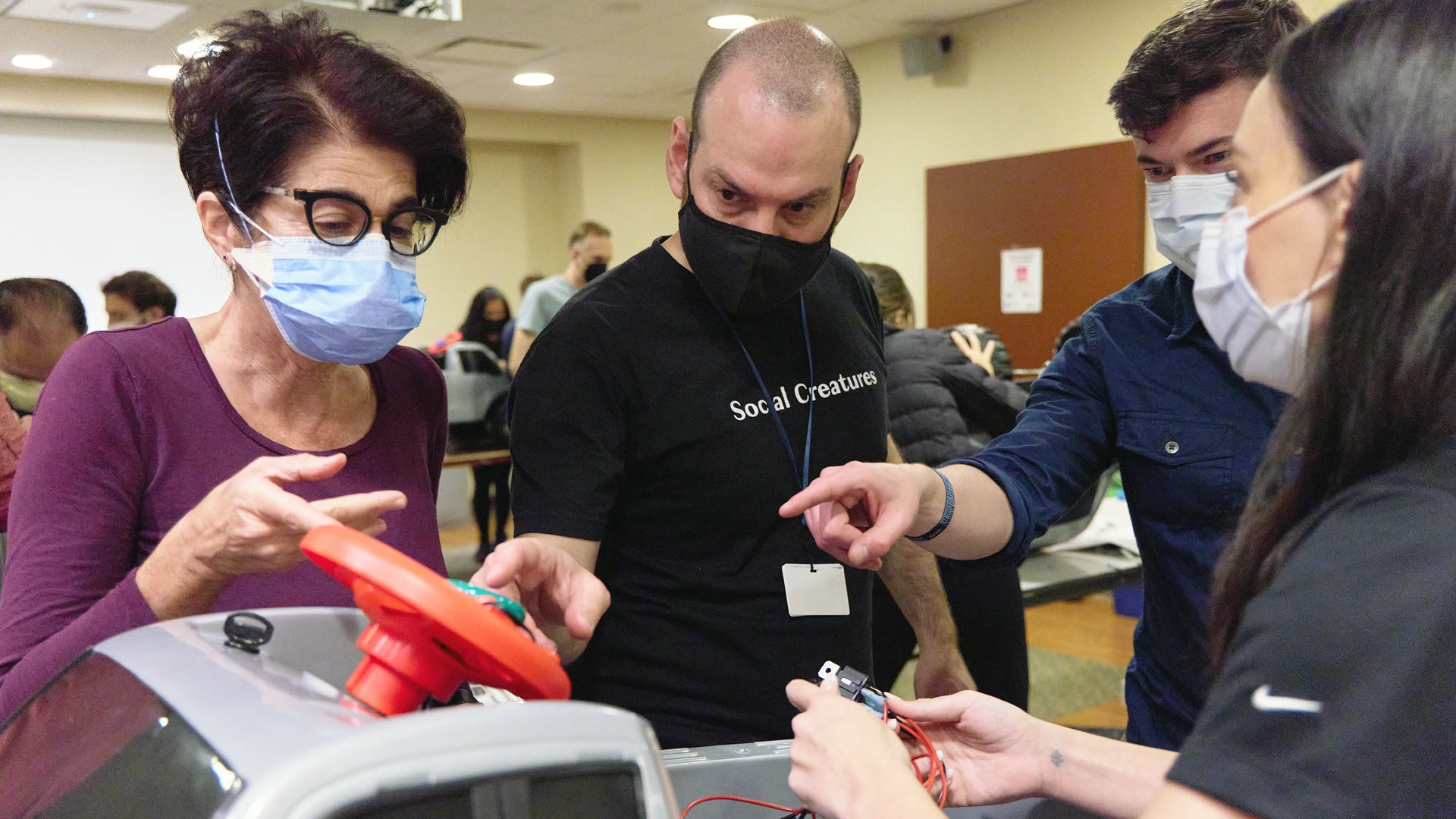
David Putrino, PhD (second from left), and Jimmy McKay, DPT, PT (second from right), examining a custom steering wheel, which has controls for accelerating the car, instead of using a foot pedal.
The children, under the advice of their physicians, were chosen based on size and cognitive ability to engage with the cars. Some had cerebral palsy, but not all. “This was for any child who has difficulty moving on their own. We kept it kind of vague on purpose because we didn’t want to limit it,” Dr. McKay explains.
Then the children were brought in to test the cars. Often, some tweaking was required.
For example, some of the children had difficulty using their feet to reach the accelerator pedal, so controls were built into the steering wheel. For others with postural instability, the inside of the car was outfitted with added supports. And for kids with paralysis on just one side, the controls were all placed on the side the child could access.
One child wasn’t able to operate the wheel but he could operate the pedal. So, the team created a pipe control arm made of polyvinyl chloride that his parents operated as they walked behind him, thereby allowing the child to control the car while his parents could steer him safely.
“Our aim was to adapt the car to the child, rather than the other way around,” says Dr. McKay. “Of course, not all were perfect right off the bat, but we were able to make adjustments and all the kids took the cars home.”
One mother, watching her 5-year-old with a seizure disorder manipulate his new car, exclaimed: “I did not expect him to be going that fast! He just gravitated toward it so quickly. I’m so, so, so excited. I can’t stop smiling!”
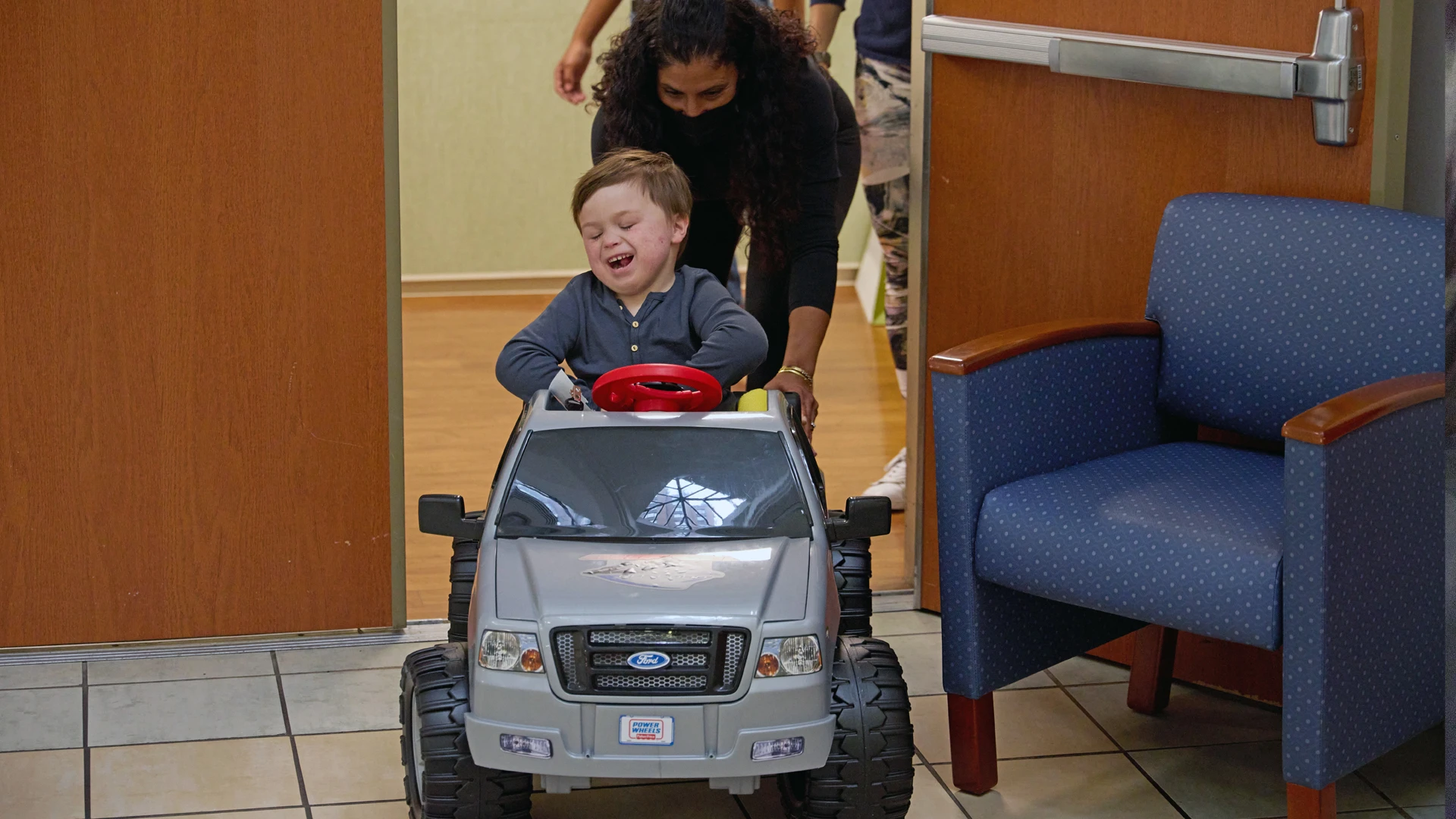
The eight children who participated not only got to drive the cars at the Charles Lazarus Children’s Abilities Center, but they also got to take them home.
The Mount Sinai team hopes to stage another Go Baby Go event soon, once COVID-19 conditions improve further. They also hope to collect data, perhaps by having children wear monitors or Fitbit devices, to see how often they’re using the cars at home and whether their function has improved as a result.
“I keep saying this event should be sponsored by Kleenex because by the end of the day the builders, the parents, are all weeping,” Dr. McKay remarks. “The kids aren’t crying at all; they’re just happy to have this thing to play with. That’s exactly what therapy should be.”
Featured
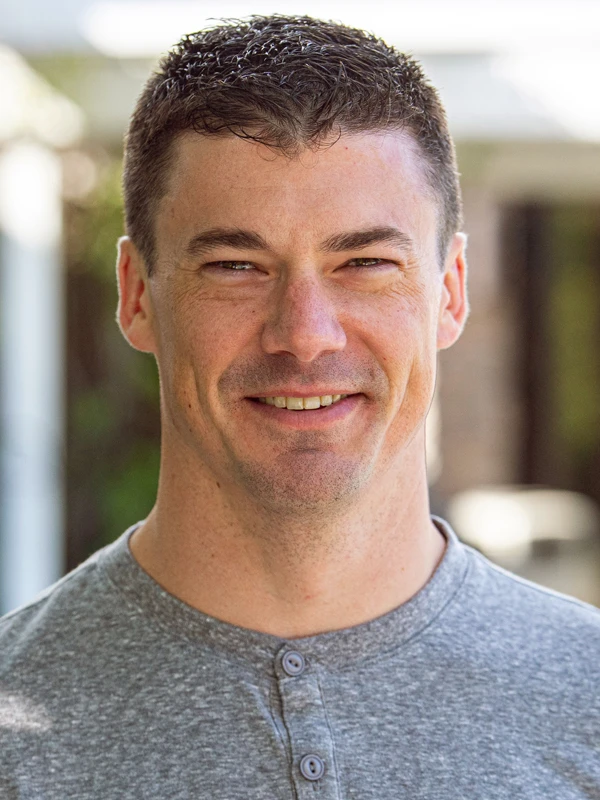
Jimmy McKay, DPT, PT
Director of Science Communication, Rehabilitation and Human Performance
